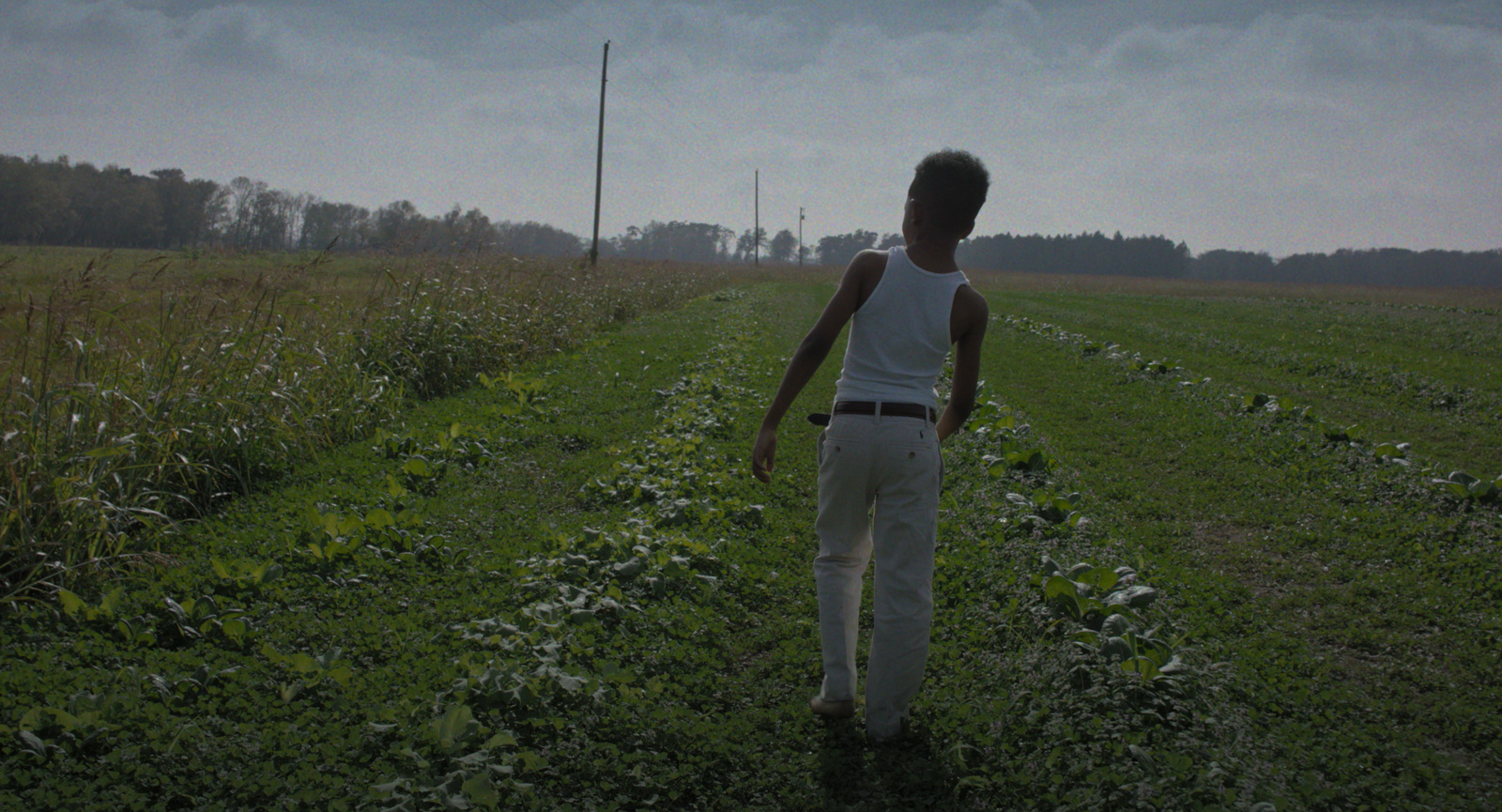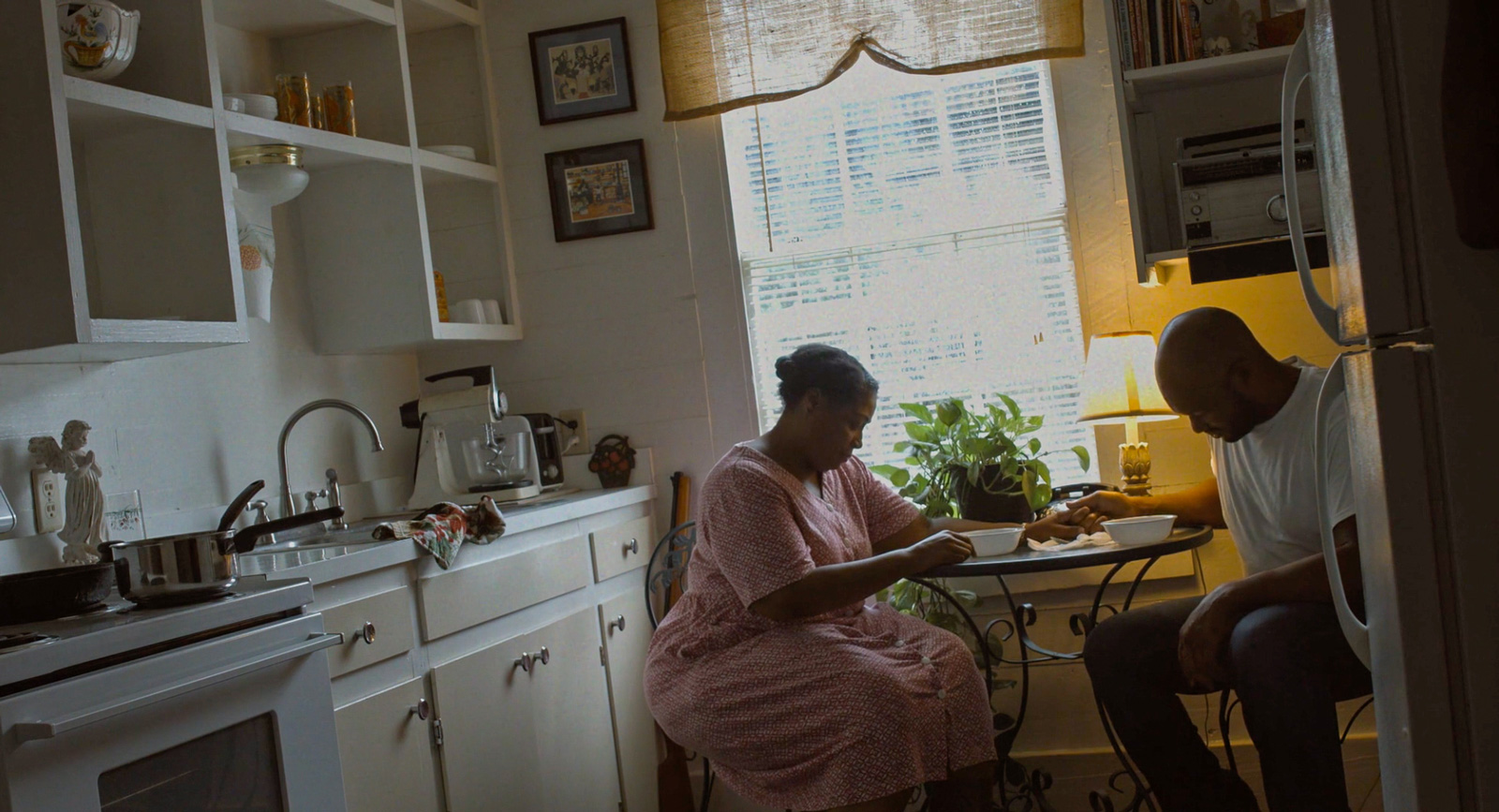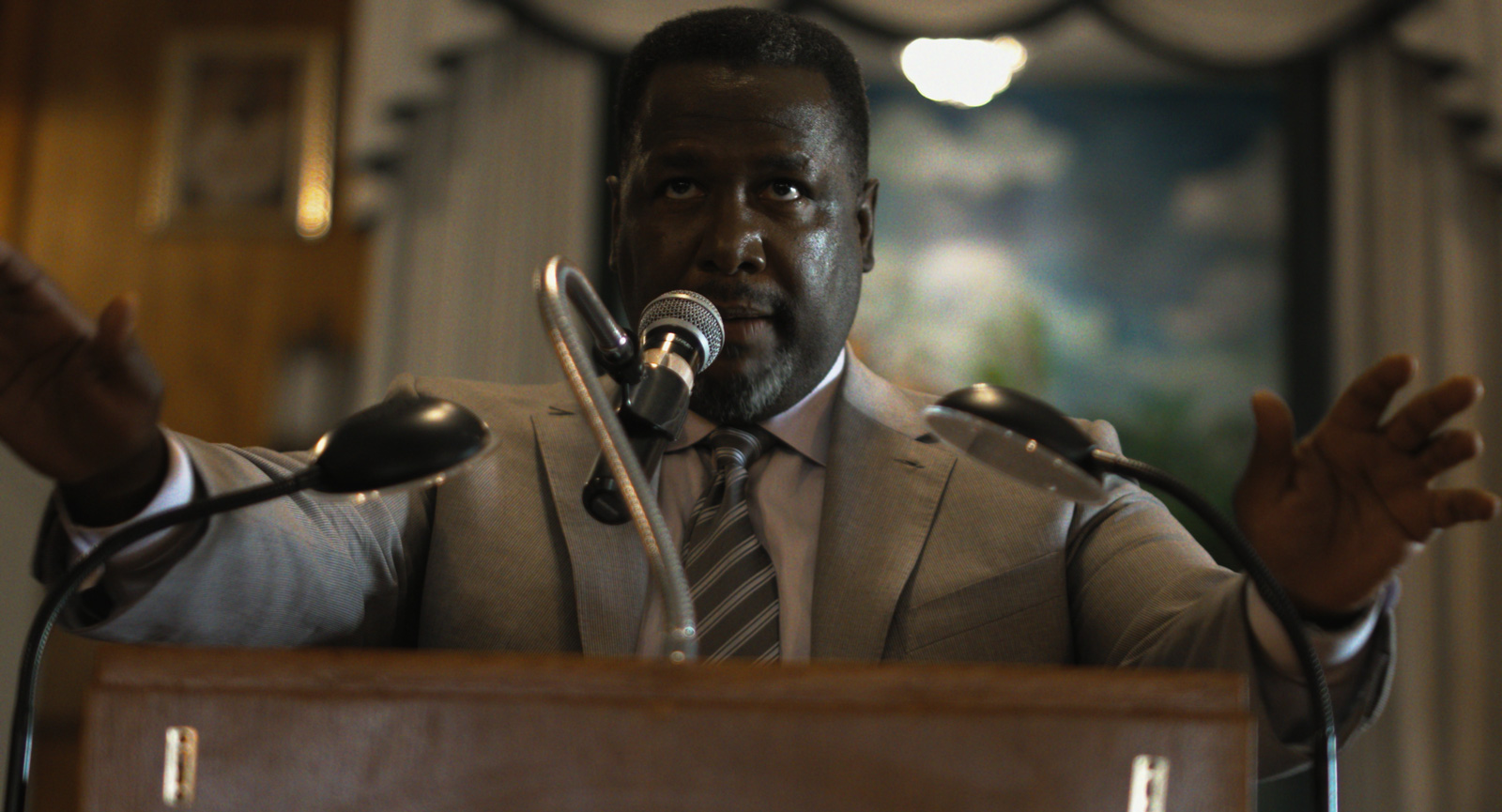The temperature is ninety degrees, with seventy-two percent humidity.
Do you know how hot that feels? The National Weather Service tells us 107 degrees, warns that prolonged exposure or strenuous activity will put you in danger of serious illness. If you have not felt such stay-still heat, those facts may not mean much, and this line, perhaps the most important in Phillip Youmans’s first feature film, Burning Cane, may slip by you, as it comes not from an on-screen character but from a disembodied voice on the radio, between announcements for a blue crab sale and a lost dog search. It helps explain the hazy quality of Youmans’s haunting, brilliantly original drama, much as a jazz man once explained to me why New Orleans’s music sounds as it does: The people always been pushin’ up against the water.
Burning Cane is, on one level, a study of people trying to do just that: push against seemingly unstoppable forces of the natural, supernatural, and human variety—the heat of rural Louisiana; depression, grief, and poverty; the devil; one another. The primary characters are Reverend Joseph Tillman, a widowed, doubting pastor; Helen, his friend and parishioner, also widowed; Daniel, her drunkard, abusive son; Sherry, Daniel’s partner, who suffers his abuse and pays his bills; and Jeremiah, the couple’s son, who is at least five but not yet ten, and who never speaks a word.
Helen (played by Karen Kaia Livers, who also helped produce the film) is tasked with most of the talking and pushing. We hear her voice before the blackness of the opening credits gives way to a wide, wild field of sugar cane burning in the distance on a sunny day. It is a gorgeous shot, at odds with Helen’s words, which are not, it turns out, synced with the figure of Helen we soon see. The film is out of joint. As Helen coughs and limps through her yard, smoking a cigarette, on her way to butcher a chicken, she laments, via voiceover, all the ways she’s tried to cure her dog, JoJo, from mange. Nothing has healed him. She refuses to take JoJo to the vet, convinced that doctors will tell her to shoot him between the eyes. “Who do they think they are?” she asks. “They have no right to tell me when JoJo needs to die. Only the Lord can do that.”
JoJo is reminiscent of the donkey-saint in Robert Bresson’s Au Hasard Balthazar, a symbol of innocence, of unmerited suffering. So it says a lot that we don’t see or hear about poor JoJo again after the opening sequence. There will be suffering, surely, but as the story unfolds—or appears, after the manner of stereoscopic slides in a View-Master—each episode invites us to consider how we would rebalance the scales of justice. Burning Cane seems to ask a question in sync with our times: Who deserves what, and when, if ever, will they get it?
From Helen and Daniel’s first on-screen interaction, also in Helen’s yard, it is clear that the answer won’t come easy. Mother and son don’t even share the same set of facts for what is, I imagine, one of the most important events of their lives, the death of Daniel’s father:
Daniel: And daddy… he worked hard every day. Worked himself to death. That’s what killed him.
Helen [sighing]: AIDS killed your daddy.
Over the course of the film, we come to understand Helen’s threadbare patience with her grown child. In the world of Burning Cane, as in our own, it is black women who are left to clean up the mess of the men, as well as to bear the brunt of their violence. We witness the price Sherry pays for Daniel’s fragile manhood. We hear from Helen of the time Reverend Tillman beat his late wife so badly that, the next morning, as she mopped her own blood, “She tried to tell him good morning… but she couldn’t.” Nonetheless, Helen is committed to saving these men. She’s an unfailingly devoted church member, struggling to restore Reverend Tillman’s faith and keep him sober, and a protective grandmother who delivers Jeremiah out of the hands of his father into the “safety” of Laurel Valley (we are not told that Laurel Valley, Louisiana, is home to the largest surviving nineteenth-century sugar plantation in the United States). Or is she a fool who, in her quest to rescue the at-times-willfully fallen, brings ruin on her house? How, though, might she free herself?
What unnerved, then frustrated, then moved me to awe about Burning Cane was that, as I sat in a theater watching the film, I remembered how it felt to be in a state such as the one these characters find themselves in: hot, poor, tired, utterly forgotten in a southern backwater, sad, in physical pain, and stuck with one another. For the reality of a poor black person in the American South, perhaps a poor person anywhere in the world, is that you often have no choice but to stay right where you are, doing just what you’re doing, which means you often have no choice but to be miserable.
Advertisement
Not all the time, of course. For example, the first identifiable song you hear in Burning Cane—again, from the radio—is the Ooooh of Dorothy Moore’s “Misty Blue”:
Just the thought of you
Turns my whole world misty blue
The ooh is all you hear, though. Someone—Helen, I assume—changes the station before Moore gets going. This dial switch is one of many minor moments that carry, in a snatch, a major message. We gather that the men in Burning Cane drink so much to escape their troubles. Might Helen shut up Dorothy Moore with similar intent? After all, when you’re already sad you don’t always want to hear another sad song. The verge of despair, this turning of the radio dial seems to say, still leaves room to maneuver. In Variety, Owen Gleiberman proclaimed, “Every moment in Burning Cane is of consequence—the consequence of living and being.” I would add that it is also the consequence of an artist’s trying to help us, or force us, to tarry in a cracked-up world, alongside complex human beings, in a medium that so often leaves us numb or glaucoma’d for the sake of entertainment.
One of Youmans’s early films—how remarkable that Youmans has early films, as he’s only twenty years old—took its title from a poem, “won’t you celebrate with me,” by Lucille Clifton, the late poet laureate of Maryland. Burning Cane seems influenced by another of Clifton’s poems, “Good Times,” which mentions such small joys as having the rent paid, getting the lights back on, baking bread, and dancing drunk, which Daniel and Jeremiah also do. (Jeremiah is plied with liquor by his father in scenes that tiptoe on sinister.) We’re shown subtle markers of this milieu of material lack: a knife for a screwdriver; a sheet for a curtain; cheap beer; lamps without shades; telephones with cords and rotary dials.
Material lack, on the other hand, makes Burning Cane’s creation story the stuff of legend. As he recounted in an interview with The Breakfast Club, Youmans first conceived the film as a short called The Glory, and expanded it to a feature at the encouragement of his professor at the New Orleans Center for Creative Arts. While working at a beignet stand, the high school junior stacked tips and set aside savings which, along with crowdfunds and donations from friends and family, provided the film’s roughly $15,000 budget. (Just think: the latest Cats disaster cost $95 million.) He shot the first half of principal photography the summer before his senior year, using a friend’s equipment, and the rest with a Blackmagic camera that his school had acquired. Ojo Akinlana and Mose Mayer, two of Youmans’s best friends, served most days as his sole crew members. The kids are alright.
I would pay to hear the young filmmaker chop it up with Charles Burnett, who wrote, shot, directed, and edited the 1977 classic Killer of Sheep while a student at UCLA on a $10,000 budget (roughly $40,000 in 2020 dollars). Youmans has allies Burnett did not, including the New Orleans native Wendell Pierce, of HBO’s Treme, who agreed to co-produce Burning Cane and play Reverend Tillman. He also has the career-changing support of Ava DuVernay, who rang Youmans in the library at NYU, where he was a freshman (Youmans has since taken leave), to inform him that she hoped to distribute his film. There is an intergenerational black film community that helped bring Burning Cane to life, and Youmans seems well aware of the legacy he steps into (he even remixes Spike Lee’s iconic double dolly shot from Malcolm X), a legacy as vital as the Wong Kar-wai films and French cinema that also inform his sensibility.
In a recent conversation between the artist-filmmakers Ja’Tovia Gary and Arthur Jafa, whose film The White Album was awarded the Golden Lion at the 2019 Venice Biennale, Jafa proposed, “If you really are engaged with the whole question of black cinema—because I think it is a question—then it almost de facto has to be experimental.” So one way of viewing Burning Cane is as an experiment, a reach for visual language to convey the delirium of despair, 107-degree heat, a drunken stupor—to reveal a world in which the prophetic vision of salvation has puttered out and left all crooked ways crooked and all rough places rough. Youmans brings to mind a skateboard phenom like Tyshawn Jones, driven by a hunger for more interesting, riskier ways to pull off the tried-and-true tricks. Some shots seem to be from the perspective of a voyeur, standing in a dark room, squinting through a house plant to peep at what’s happening yonder. Nearly an hour in, there’s a shot of Reverend Tillman’s tired-looking choir, faces hardly lit, the camera crouched as if it’s kneeling at the altar. One choir member looks into the lens, as a person might in a home video or on surveillance footage. I even wonder whether shots like this are intended to suggest the devil’s point of view. “Often we don’t know,” Reverend Tillman shouts during the same scene, “that [Satan] done already come up on us… captured our children!”
Advertisement
Which brings us back to the question: Who deserves what, and when, if ever, will they get it? When Sherry can’t be found, Helen must decide in lieu of God. “Something terrible must’ve happened,” she tells her son, who finally confesses—to what exactly, we do not know. Helen seeks Reverend Tillman’s guidance, which comes in the form of a scriptural pep talk as ominous as Samuel Jackson’s in Pulp Fiction (1994). Ephesians 6:10–18, he tells her, prescribes: “When the day of evil comes, take up the stand of faith, with which you can extinguish all the flaming arrows of evil.” But he adds a verse that I can find nowhere in scripture: “Perform as God might.”
Helen goes home. Lights a cigarette. Sings a hymn. Takes a swig of liquor. Grabs a shotgun. Youmans makes us stand outside in the dark and watch through a window as Helen’s silhouette prepares this consecration. The next sound we hear is one of the film’s loudest, and the last. You won’t see the chilling sound’s effect, though. We are left not with a whodunnit, but a Who got it?
If every great story ends by starting a new story, then Phillip Youmans has succeeded on two levels with Burning Cane: we want to know what Helen has done. Even more, we want to know what Mr. Youmans will do next.
Burning Cane is streaming on Netflix.




